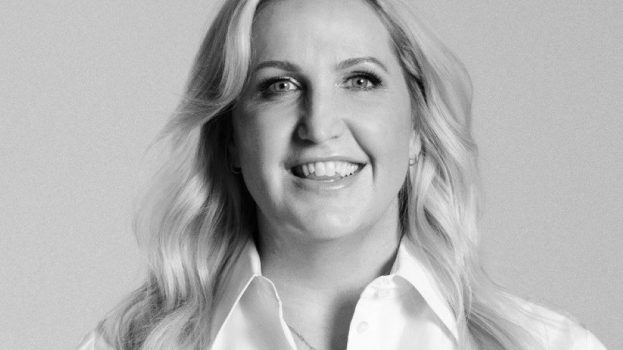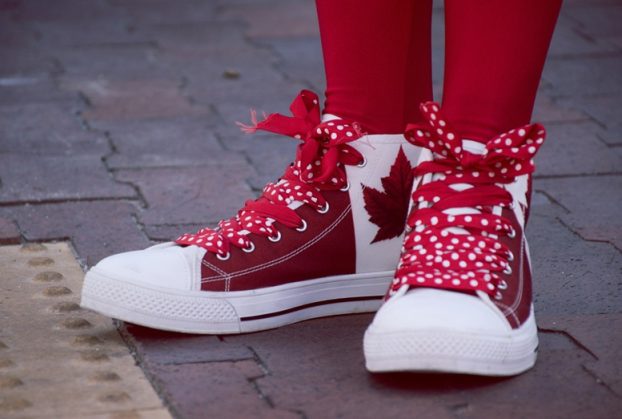Ever wanted to walk into a bank where everyone knows your name? The quaint scenario could again become a reality with a little help from radio frequency identification (RFID) technology.
Dayton, Ohio-based transaction solutions company NCR recently unveiled a ‘portal’ that’s capable of scanning RFID chips (embedded, for example, into bank cards). As customers enter, tellers could pull up their files, greet them by name and provide customized offers.
‘It harks back to a generation when you did know your bank manager. We’re almost going back to the future,’ says Mark Grossi, chief technology officer at NCR’s financial solutions research and development lab in Dundee, Scotland.
Grossi says retail could also benefit from having RFID portals activated by store loyalty cards. For example, when a customer walks into a boutique, the salesperson could pull up a file with info like sizes and preferred brands. ‘It provides a more personal experience,’ he says.
Meanwhile, Clifton, Va.-based Hybridia Design has drafted plans for interactive RFID sales tags. These connect to a social network which would enable shoppers to solicit fitting room opinions via an in-store monitor from a panel of design pundits on stand-by in a lounge-like ‘fashion lab.’ The system could also ‘introduce’ them to nearby shoppers with similar interests. Hybridia president/CD Richard Russo envisions wired fitting rooms, with mirrors capable of reading the RFID tag on a garment and then transmitting info about complementary accessories to the consumer via a plasma screen. Another panel could potentially be an ‘aura screen,’ that could suggest places and occasions to wear the item.
‘Retail is at a transition point,’ says Russo. ‘RFID enables retailers to employ a lot of different creative things for the retail experience.’
Russo says he’s in talks with a company interested in deploying a RFID-responsive three-panel mirror, and predicts it will be in-store within the next 18 months.
And, while NCR’s portals haven’t started rolling out yet, Grossi expects the Asian and South Asian markets to be the first to adopt them, with North America following within five to 10 years. NCR has received several inquiries from financial institutions in India, which Grossi attributes to the country’s current technology leapfrog.
RFID in Asia
Asia is way ahead of the rest of the world when it comes to RFID apps. Here are a few that will likely start rolling out in the late-adopting North American market over the next few years…
Japan
RFID is already big in Japan, particularly with enabling m-commerce. Mobile FeliCa, a mobile smart card system developed by Sony and facilitated by Japanese mobile phone co NTT DoCoMo, has enabled ‘wallet phones’ that allow consumers to pay for items by waving their cellphones over a RFID-reading sensor instead of having to swipe cards. The chips are connected to the user’s credit card account. The wallet phones hit the Japanese market in 2004, and now have 18.3 million subscribers.
In late January, Tokyo department store Mitsukoshi launched a RFID pilot in its cosmetics section, and attached RFID tags to select lipsticks, eyeshadows and blushes. Consumers can wave the makeup over a sensor to call up a computer-generated simulation of what they might look like wearing the item, as well as product info and item feedback from other shoppers. The tags also allowed the store to collect data on how often each product was sampled.
Hong Kong
Hong Kong’s Octopus Card, which uses a RFID chip to enable contactless transactions, launched in 1997 as a payment method for the city’s transit system, allowing commuters to simply flash their cards within close proximity of the RFID readers instead of having to stop and swipe. The card has since evolved into a widely accepted payment method, allowing holders to also use it at convenience stores, QSRs, vending machines and parking meters. The cards operate on a pay-as-you-go basis, and there are many kiosks around the city to reload. There are currently over 10 million Octopus Cards in circulation, and Octopus Holdings, the card’s operator, recently set up a branch in the Netherlands to establish a similar payment system there in the near future. AB
GIST BOX – RFID 101
* RFID = Radio Frequency Identification.
* RFID tags can be attached to items to identify them via radio waves.
There are two types of RFID tags – passive and active. Passive EPC (Electronic Product Code) tags are relatively cheap, and are currently used by big retailers like Wal-Mart Canada, Safeway and Starbucks to track merchandise. They typically cost retailers about five cents each. EPC use is still in very selective pilot stages in Canada right now.
* Active tags have a longer range (typically up to 300 feet) and more memory than passive tags. They are better suited for tracking air and sea freight, as well as for being embedded into cellphones to enable cardless transactions, as with Mobile FeliCa in Japan (see sidebar).























